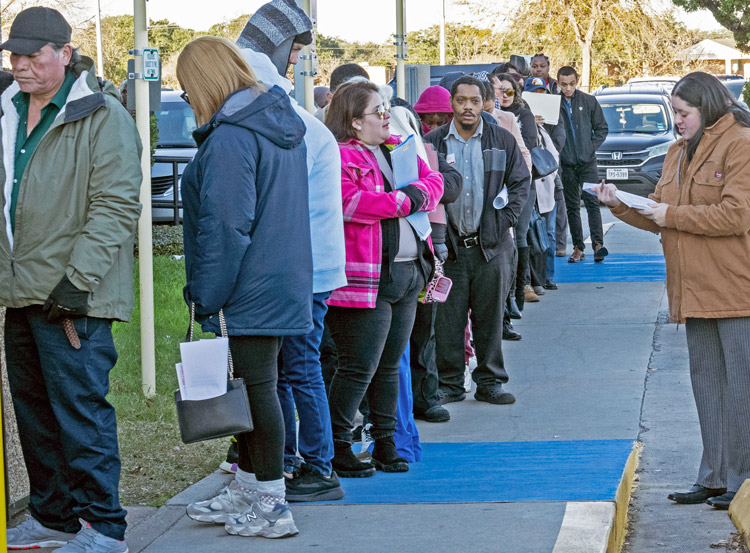“The era of falling apartment rents looks to be nearly over,” a Wall Street Journal article announced Feb. 14, saying that “a landlord-friendly era” is about to open. But there has been no “era of falling rents” for working people, the landlord’s take just goes up and up. So what is this article talking about?
Yes, as the Journal explains with delight, corporate landlords are preparing ever bigger rent raises to boost their profits. This comes amid continuing rising prices in a wide gamut of things workers need — from eggs to coffee, electric rates, health care, used cars and much more.
Since 2000, the average rent workers face has increased by a whopping 130%, six times faster than median household income. In 2023, half of all renters spent 30% or more of their income on rent and utilities, while more than a quarter of renters spent 50% or more.
The Journal claimed “a historic apartment construction boom in 2023 and 2024” led to an oversupply of housing units resulting in falling rents. But they fail to distinguish between rents for fellow Wall Street dabblers and those heaped on the backs of the great majority of working people. The “construction boom” they call “historic” was overwhelmingly aimed at building housing for the rich and their upper-middle-class hangers-on.
The overbuilding frenzy by profit-driven construction bosses was focused on “luxury” apartments. This produced a vacancy rate nationwide of over 11% in this market, and real estate companies have offered lower rent deals for these high-priced clients. This is the “era of falling rents” the Journal refers to.
For workers, there is a shortage of affordable housing. An average of nine prospective renters competed with each other for every available apartment last year.
Amber Melhouse, who had rented her apartment for years in Brooklyn, tried to get another apartment after her landlord raised the rent last year on her two-bedroom unit from $4,250 a month to $5,600. After months of trying she gave up, and rented out her second bedroom to make up the higher rent. “It’s just a sport I don’t have an appetite for anymore,” she told the Journal.
Average monthly rent across the U.S. is $1,968, according to Zillow, but in many larger cities it’s way higher — $3,000 or above in San Diego, Miami, San Francisco, Boston and New York.
In fact, this month the average rent in New York is $3,893, Apartments.com reports.
Bigger and bigger conglomerates
Landlords’ drive to raise profits today is being led by large real estate companies that buy up apartment complexes and then jack up the rent. Equity Residential, for example, owns or has investments in 312 such properties with over 84,000 apartment units nationwide, including in Boston, New York, Denver, Atlanta, Dallas, Seattle, and Washington, D.C. Recently they paid more than $274 million to expand their operations in Atlanta and Denver.
Blackstone, the nation’s largest landlord, owns some 350,000 units of rental housing in the U.S., and more around the world. Its assets total $1 trillion.
High mortgage rates now hover around 7%, double what it was a few years ago. And record home prices are another obstacle, forcing workers, especially younger workers, to put off leaving their parents’ place to live on their own and raise a family. Home sales in the U.S. fell last year to the lowest level since 1995.
On Feb. 15 the Journal wrote about another market where they see growing profits in, “Why There Is No Relief Ahead for High Used-Car Prices.” The average price of a three-year-old used car was nearly $28,000 in early February, up 45% from 2020. And the average price of a new car is now $48,600.
The cost of getting a used car is pushed higher by high interest rates and auto-insurance premiums. Many workers who had leased a car from a dealer for a few years with the intention of turning it in when the lease runs out, are now deciding to just buy it instead. Monthly payments for getting another vehicle — new or used — would be more than covering repairs on the old model.


